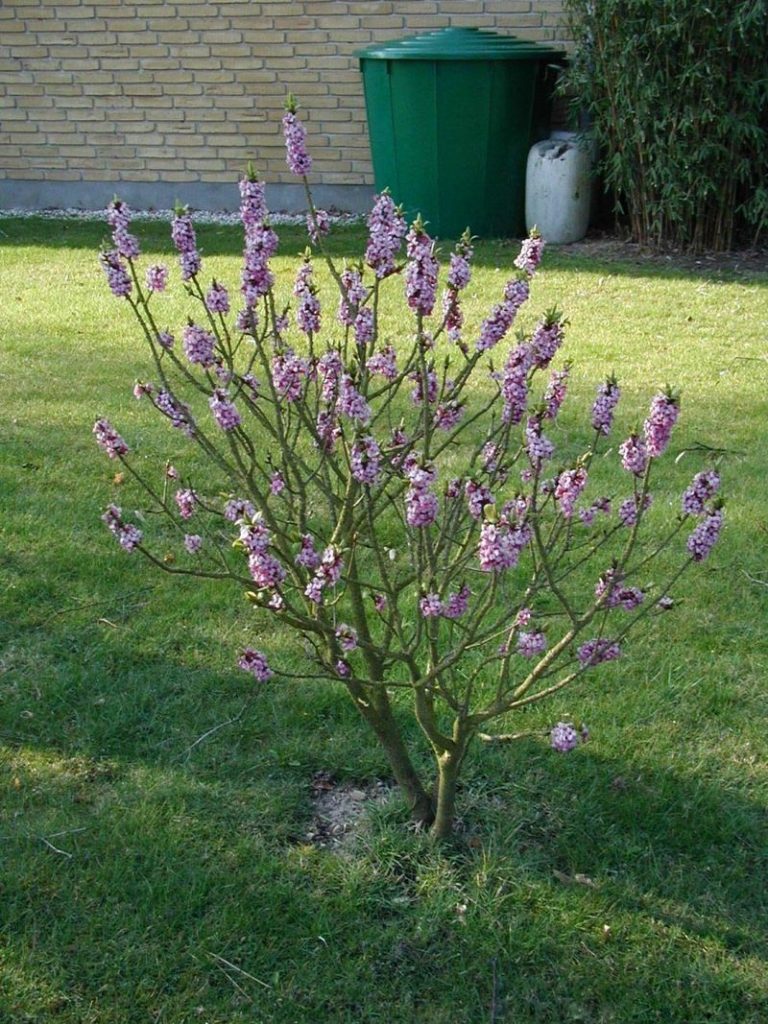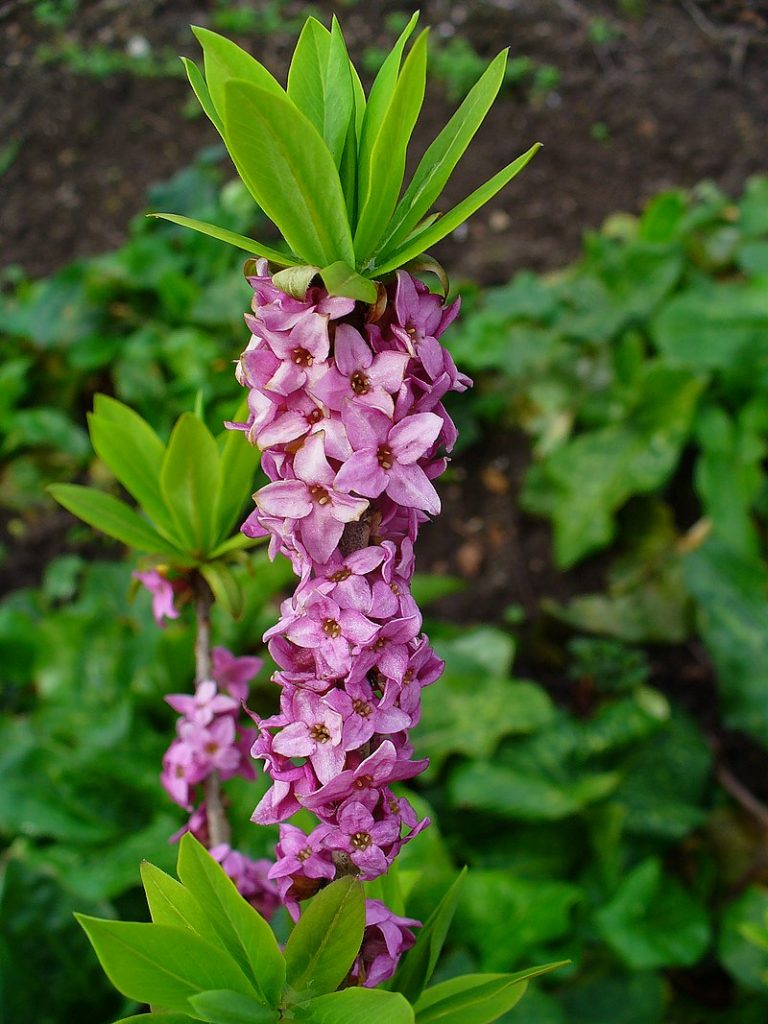
Also known as February daphne, spurge laurel or spurge olive, this deciduous shrub is native to limestone soils in mixed woodlands of most of Europe and western Asia, north to northern Scandinavia and Russia but was introduced to North America in colonial times and has become weedy in some areas. It is a member of the Thymelaeaceae, a plant family of just under 900 species, most of which are unfamiliar to North American gardeners. The plant grows up to 5′ tall and has brown woody branching stems that carry oblanceolate, gray-green leaves on short stalks . The leaves are 1-3″ long, and are spirally arranged in clusters near the tip of the stems. The 4-lobed small flowers appear in clusters in early spring before the leaves emerge. They are very fragrant and have a pink or light purple perianth. The fruit is a round bright red berry that is eaten by birds but is very poisonous to humans. D. mezereum is a good choice for use as a specimen and shrub border, as well as in fragrance, winter, woodland, and shade gardens. All parts of the plant are highly toxic to humans if ingested and the sap may irritate the skin. The genus name, Daphne, honors a nymph of Greek mythology. The specific epithet, mezereum, is from the Arabic word مَازَرْيُون (māzaryūn), the name of a species of Daphne. Photo Credit Sten Porse Wikimedia Commons

Type: Deciduous flowering shrub
Outstanding Feature: Flowers
Form: Rounded
Growth Rate: Moderate
Bloom: Clusters of pink to light purple flowers in early spring before the leaves emerge
Size: 3-5′ H x 3-5′ W
Light: Full sun to partial shade; needs afternoon shade in warm climates
Soil: Fertile, consistently moist, well-drained, alkaline
Hardiness: Zones 4-7; does not tolerate heat and humidity of deep South
Care: Plant where protected from strong wind; apply mulch to keep the roots cool and moist; prune only when necessary.
Pests and Diseases: Aphids, leaf spot, botrytis, gray mold, viruses
Propagation: Seed, softwood cuttings in early to midsummer, semi-ripe heel cuttings in mid or late summer; plants resent transplanting.
Comment: All parts of the plant are poisonous
Photo Credit: H. Zell Wikimedia Commons